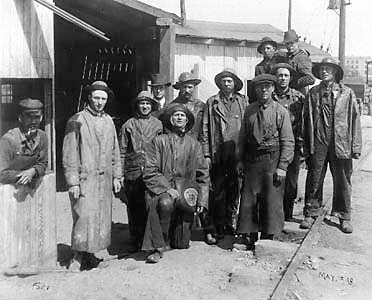Search | Image Archive | Reference | Communities | POV | Lesson Plans | Credits
 As the City of Winnipeg grew, so to did its water requirements. Winnipeg had historically relied upon artesian well sources to supply its water needs, but with a growing population and a growing industrial use of water, this supply proved to be inadequate.
As the City of Winnipeg grew, so to did its water requirements. Winnipeg had historically relied upon artesian well sources to supply its water needs, but with a growing population and a growing industrial use of water, this supply proved to be inadequate.
The need for a high pressure water supply to fight fires was met by the James Avenue Pumping Station in 1907, but this did nothing to solve the drinking water problem or to make available adequate water for industrial expansion.
The City of Winnipeg struck a Water Supply Commission in 1906 to investigate possible sources for a new water supply, but when the city decided to proceed with the establishment of the Winnipeg Hydro power plant, the question was shelved since the city could not afford to undertake two such massive capital projects at once.
The question was revived again in 1912, as the need for a new water supply became more pressing. The city was faced with a choice between two options. The first involved the development of the Poplar and Crystal Springs artesian sources, located about twenty kilometres north-west of the city. This would be the less expensive option, at $1.8 million, but would only meet the need in the short term. The second option involved the construction of a $13.5 million, one hundred and fifty kilometre aqueduct from Shoal Lake (Lake of the Woods) on the Manitoba-Ontario border. The latter though more expensive, promised a virtually unlimited water supply.
In 1913, the Greater Winnipeg Water District was created to act on the Shoal Lake option. Construction on the aqueduct and the railway that lay along side employed hundreds of labourers and was one of the few public projects which continued through the War, which witnessed severe curtailment of economic activity. The aqueduct was finally completed in 1919, and made available to the city a virtually unlimited supply of water, which made possible not only an increase in domestic consumption, but also an increase in industrial consumption.
Page revised: 29 August 2009